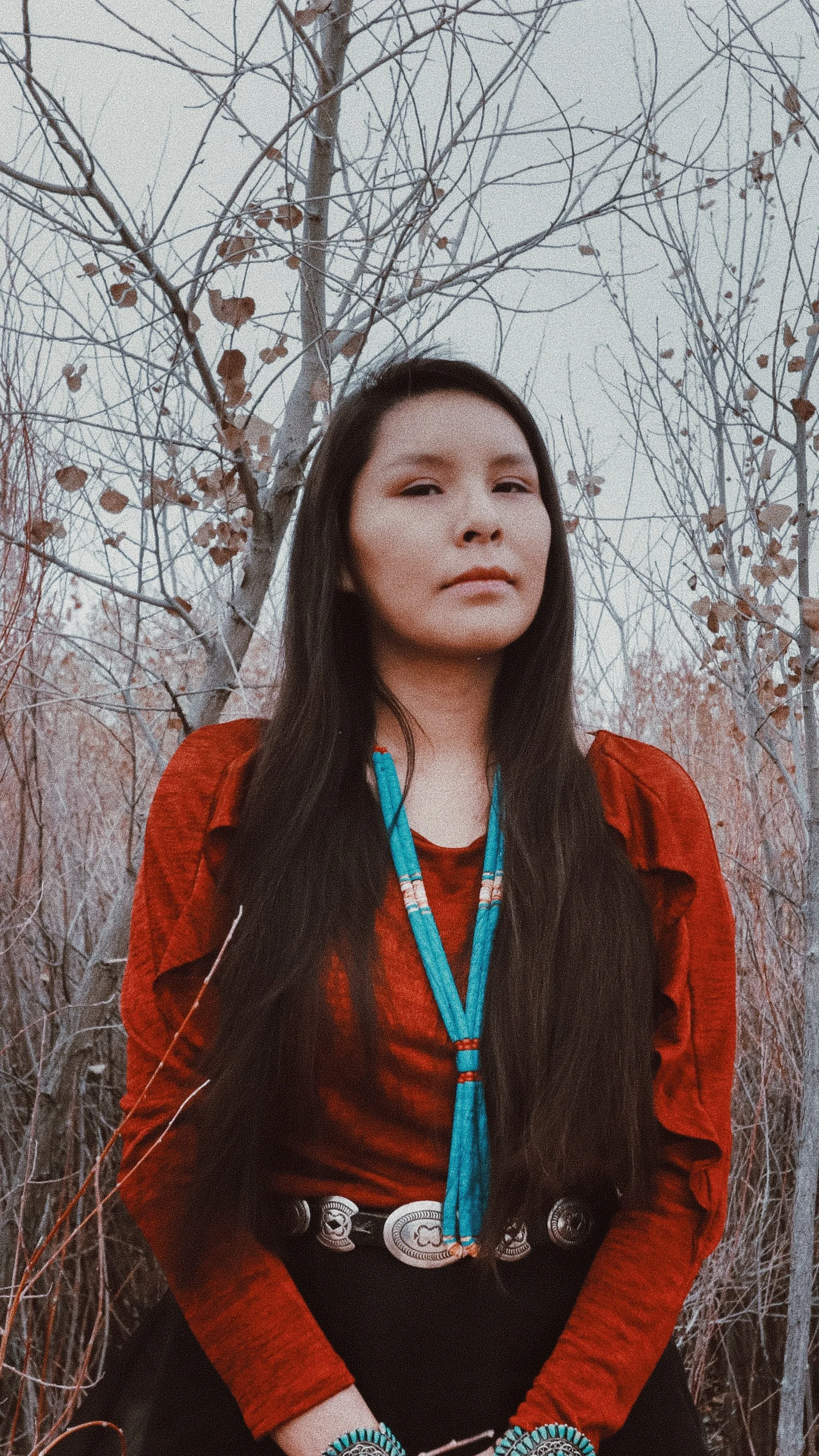Indigenous Musicians You Need On Your Radar
By Renata Yazzie
Yá’át’ééh, shí éí Renata Yazzie yinishyé. Tó’aheedlíinii nishł̨į́ Kinyaa’áanii báshíshchíín. Bit’ahnii dashichei, Hónágháanii dashinálí. Greetings, my is Renata Yazzie. I’m a Diné pianist, musicologist, composer, and music journalist. On this Indigenous Peoples’ Day, we celebrate the artistry and musical expression of these five Indigenous artists from across North America. Here, I offer a snapshot of the future of Indigenous music while acknowledging that there are many artists doing incredible work beyond this list.
Rain From Heaven
Rain from Heaven is an ethereal grunge-pop project led by Isabel Vaszquez (Desert Cahuilla/Nahua) that I became familiar with during her time in New York City with the song “just tell me when you wanna ride.”
With a pure bell-like voice, she weaves her sincere vocals in and out of catchy synths, stable beats, and the occasional distressed acoustic or electric guitar. Her most recent release petra-coeur offers a palette of heartbreak that appeases both the young and old in love.
+++
Joy Zickau
I first heard the music of Joy Zickau (Seminole/Coushatta) on Jacqueline Wilson’s (Yakama) album Daughter of the Wind: Works for the Basson by Living Native Composers. “Hotvle for Bassoon and Harp” drew me in with its enchanting qualities and gorgeous melody. Joy is currently piano and harp faculty at Whitworth University and the principal harpist for the Coeur D’Alene Symphony Orchestra and the Washington-Idaho Symphony Orchestra. “Hotvle” is a Mvskoke word that means “wind” and Joy’s hands gliding up and down the harp on this piece, certainly evoke the delicate sounds of wind.
+++
Khu.éex
Seattle-based jazz-funk band Khu.éex’ is a collective of musicians, storytellers, activists and artists originating from Tlingit, Haida and Blackfoot tribes who engage in musical expression for the primary purposes of raising awareness around critical Indigenous issues, cultural continuance, and language revitalization. Their most recent album Red Cedar in the Hour of Chaos remembers and responds to the 2020’s fentanyl era and the effect it had on Indigenous communities. The sound of Khu.éex’ meanders through jazz, funk, some hip-hop, soul, a little doom metal and psychedelia and centers their respective Indigenous languages (Tlingit and Haida) as heard prominently on my favorite tracks “Lovebirds” and “We Pray.”
+++
Ribbon Skirt
I became aware of the indie rock duo Ribbon Skirt just a few days ago, but the first sounds I heard from Anishinaabe musician Tashiina Buswa and guitarist Billy Riley, had me hooked. With Billy’s driving caustic guitar, Tashiina’s soulful fresh vocals, and a refusal to be bound by musical categorization, Ribbon Skirt’s mesmeric lyricism and honest expressions sound a meaningful cacophony. Listen to their album Bite Down before settling down with their most recent EP PENSACOLA, a lingering, slightly mellower follow-up to the full album.
+++
Colby Hunter
Perhaps the youngest person on this list is Diné jazz pianist Colbe Hunter who just began his own music studies at California State University, Sacramento this fall. Armed with a passion for jazz, a fresh groove and more-than-capable hands, his evolving sound explores both the jazz greats like Miles Davis, and jazzifies the popular such as his cover of Tyler the Creator’s “See You Again.”
Follow him on Instagram or TikTok (@colbe_hunter/@colbehunter) to hear more and maybe if you’re lucky, you’ll hear him perform live.
+++
Please join me in celebrating this Indigenous Peoples’ Day by listening to, supporting, sharing and purchasing music from Indigenous musicians, singers, artists, and composers!

